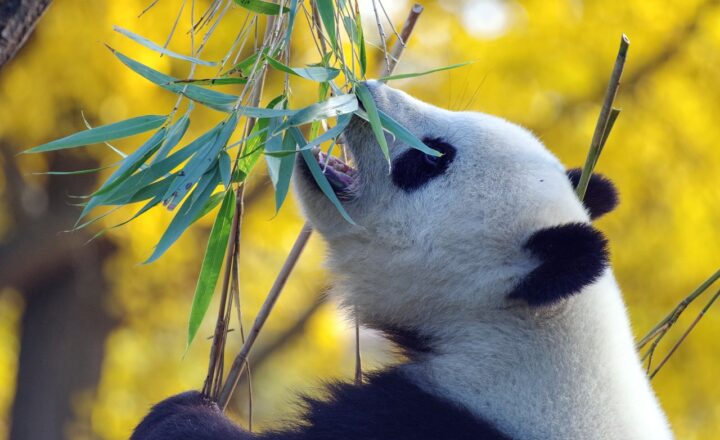
The world is a vast and wondrous place, teeming with life in all forms, but some creatures stand out as particularly strange and bizarre. From the deep depths of the ocean to the thick canopies of rainforests, oddities of nature never cease to amaze. In this article, we will embark on a journey to uncover the strangest animals on our planet, exploring their unique adaptations and the environments they inhabit.
1. The Axolotl: Nature’s Eternal Youth
The axolotl, often called the Mexican walking fish, is an amphibian that remains in its larval form throughout its life. This means it retains its juvenile features, like gills that flutter from its head and a slimy skin that can regenerate lost limbs, making it a living example of neoteny. Found primarily in the canals of Xochimilco in Mexico, this fascinating creature can regenerate not only its limbs but also parts of its heart and brain.
The axolotl’s ability to regenerate has made it a key subject in scientific studies, particularly in regenerative medicine. Its habitat is under threat from urbanization, making this truly unique animal a symbol for conservation efforts.
2. The Naked Mole Rat: A Hairless Marvel
Native to the deserts of East Africa, the naked mole rat boasts a lifestyle that is completely unlike any other mammal. This small, hairless creature lives in large colonies, reminiscent of social insects like bees and ants. Naked mole rats are remarkable for their resistance to cancer and their ability to survive in low-oxygen environments.
Their skin lacks hair, causing them to be sensitive to temperature changes, yet their social organization allows them to thrive. They also have specialized teeth that enable them to dig extensive tunnels and protect their colonies from intruding enemies. These rodents are not only unique because of their appearance but also due to their fascinating social structures.
3. The Platypus: A Mammal That Lays Eggs
The platypus is one of the most iconic examples of an odd creature on our planet. This unusual mammal has a duck-bill, webbed feet, and lays eggs, making it an anomaly among mammals. Native to Australia, the platypus is a monotreme, a group of egg-laying mammals that also includes the echidna.
In addition to its peculiar appearance, the platypus is capable of electroreception, allowing it to detect electrical signals generated by the movements of prey in the water. This remarkable adaptation helps it hunt underwater when its eyes and ears are closed. The platypus showcases the diversity of life on Earth and challenges our traditional understanding of mammalian biology.
4. The Pufferfish: Inflation as a Defense
Known for its ability to swell up to three times its normal size, the pufferfish is one of the most bizarre fish in the sea. Found in tropical and subtropical waters, these fish are not just amusing; they have a serious tactic for deterring predators.
When threatened, the pufferfish inflates by filling its stomach with water (or air), allowing it to become a spiky ball that is difficult for predators to swallow. Additionally, many species of pufferfish contain tetrodotoxin, a potent neurotoxin that can be lethal, making them a dangerous meal for any predator that manages to bite into one. The combination of inflation and toxin makes the pufferfish a fascinating study in animal defense mechanisms.
5. The Aye-aye: A Lemur of Many Wonders
The aye-aye, a type of lemur native to Madagascar, is known for its unique method of finding food. This nocturnal creature has an elongated middle finger, which it uses to tap on trees and locate insects hiding beneath the bark. Once it identifies a target, it gnaws a hole in the wood and uses its impressive finger to extract the tasty treat.
Despite its intriguing adaptations, the aye-aye is often misunderstood and considered an omen of bad luck by local cultures, leading to its endangerment. These fascinating creatures are a reminder of the importance of conservation and understanding biodiversity in our ecosystems.
6. The Star-Nosed Mole: Nature’s Oddest Nose
With a unique star-shaped nose covered in thousands of sensitive sensory receptors, the star-nosed mole is an extraordinary adaptation to its subterranean lifestyle. Found in North America, this small mole uses its star-like appendage to navigate through mud and the darkness of its underground home.
The star-nosed mole is one of the fastest foragers in the animal kingdom, able to identify and consume insects in mere seconds. This peculiar creature highlights the incredible diversity of feeding adaptations in mammals.
7. The Blue-Ringed Octopus: Small but Deadly
Despite its small size and attractive appearance, the blue-ringed octopus is one of the most venomous creatures on Earth. Native to the tide pools and coral reefs of the Pacific and Indian Oceans, this octopus carries enough poison to kill a human. The striking blue rings that appear when the octopus feels threatened serve as a warning signal to potential predators.
What makes this animal even more fascinating is its ability to camouflage itself perfectly within its environment, blending in with the surrounding coral and rocks. As a result, it can ambush prey while being nearly invisible.
Conclusion
The animal kingdom is filled with incredible oddities that flaunt the richness of evolution and nature’s creativity. From the adorable axolotl to the deadly blue-ringed octopus, these strange creatures remind us of the diversity and adaptability of life on Earth. Understanding these remarkable animals not only deepens our appreciation for nature but also emphasizes the importance of protecting their habitats and ensuring their survival for generations to come.
As we continue to explore our planet, let us remain curious and open to the wonders that the animal kingdom holds. Who knows what other mysteries await discovery in the hidden corners of our world?






